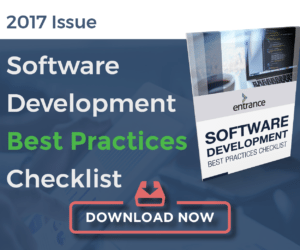ARE YOU LOOKING TO BUILD RICH, INTERACTIVE DATA VISUALIZATIONS USING POWER BI?
We can work with you to create stunning visualizations in as little as a day.
For many years, Microsoft has had the Business Intelligence space in a headlock with its class-leading suite built on SQL Server, including SSRS, SSAS, and SSIS. On top of that, Excel is probably the most widely used “BI” product in the world. From this comfortable position, the folks in Redmond must have been caught off guard a bit by the sudden deluge of in-memory visualization tools, such as Tableau and Spotfire, which are able to render millions of rows of data to the screen quickly.
They have not wasted time regaining ground from these competitors, however. Over the past year (Power BI recently celebrated its first birthday), they have been continuously adding features to their own foray into the big data visualization market.
Where TIBCO Spotfire is geared towards the engineering crowd and provides more advanced analytics, and Tableau is simple to pick up and use, Power BI has an edge in how it is packaged and sold alongside other Microsoft products such as Office 365.
For starters, a version of Power BI is provided for free, albeit with limitations on data refresh and sharing. The full version is only $9.99/user/month. Its data gateway allows on-premises SQL data to be exposed securely to the internet to be consumed by Power BI. Power BI ingests Excel data and can reuse data models built in Power Pivot. The whole product, both online and mobile, integrates with Azure AD and Office 365 Groups, so a duplicate security model need not be developed. In the future, look for sharing of dashboards in Power BI with external parties as well as easy embedding of reports and dashboards into SharePoint sites.
Power BI is also a leader in solution accelerators, called “Content Packs”. These connect to standard data sources, such as Google Analytics, Trello, and Dynamics CRM, and instantly generate reports and dashboards that your company can use. Aside from showing your dashboard developers what’s possible with the tool, these content packs are good enough that you will actually use them, which typically isn’t the case for out-of-the-box templates.
Power BI is a bit trickier to get started with than Tableau or Spotfire, so it can be really helpful to have a partner that is experienced with the tool to come in and provide some training or a proof-of-concept dashboard. When you are ready to take on a true visualization initiative using Power BI, there are a number of things to consider.
Like with other business intelligence and analytics projects, you should begin with the end in mind; namely, what critical business questions are you trying to answer and what visualization is needed to answer those questions? Once determined, the data required to build that visualization should be normalized as needed and connected with Power BI. This is where you would set up your gateway(s) and refresh schedules. For this step, you will want an experienced Business Analyst and a competent Database Administrator. It is also helpful to designate someone as the owner of each piece of data. This person is responsible for answering questions about the data and verifying its integrity.
Next, have your visualization artists iteratively create and get feedback on the dashboards, working closely with the end users. This may take some back and forth, but the polish will be worth it.
Your team should be working under the strictures of a written governance policy that specifies how release management will work, the list of approved data sources, training required for end users, and how security will be set up and managed. Our team can help you come up with this governance policy based on our past work.
Lastly, consistent two-way communication should occur as dashboards are rolled out. This includes announcements, training, and requests by end users for new dashboards. The worst thing that can happen in a project such as this is for an expensive team to develop great visualizations and then nobody uses them.
Customer Portal Success Story
DIFFERENTIATING YOUR SERVICES WITH CUSTOMER PORTALS
Real-world examples of how 2 companies used customer portals to attract and retain customers.

